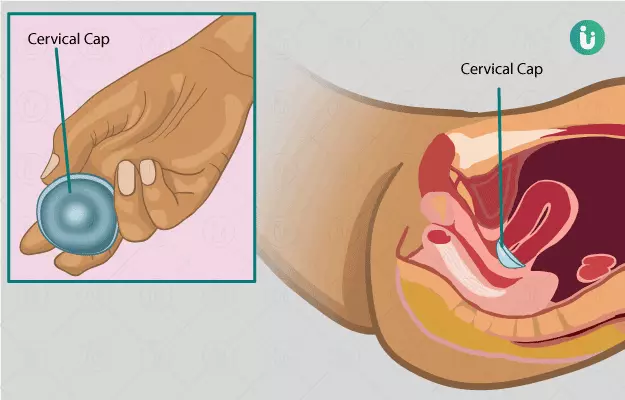The history should be used to assess the probability of compliance and discover possible contraindications to diaphragm use. The client should be instructed in anatomy and physiology of the vagina and cervix, mechanism of action as a barrier method, the importance of using spermicide with the diaphragm, length of time the diaphragm must be left in place, the possibility of slippage during intercourse, avoidance of petroleum products, proper care, checking for tears and holes, possible side effects, and diaphragm insertion.
Diaphragms come in different sizes, so you must visit a health professional to be fitted and get a prescription for the right size and type of diaphragm. The largest comfortable size should be selected.
With clean hands, put a small amount of spermicide on the upper surface of the diaphragm (approximately two 2cm strips). Some women find that putting a little spermicide on the rim makes the diaphragm easier to put in.
Put your index finger on top of the diaphragm and squeeze it between your thumb and other fingers. Slide the diaphragm into your vagina upwards and backwards. This should ensure that the diaphragm covers your cervix.
Always check that your cervix is covered. It feels like the end of your nose. If your cervix is not covered, take the diaphragm out by hooking your finger under the rim or loop (if there is one) and pulling downwards and try again.
Some women squat while they put their diaphragm in. Others lie down or stand with one foot up on a chair. You will need to find out which position is easiest for you.
Proper fit is checked after women have walked around the room and exercised for 5 minutes. Most women can use either the coil spring or arc spring diaphragm comfortably.
The woman should be able to insert the diaphragm properly, assess for placement, and remove it without difficulty. The women should return in 2 weeks for a recheck of the diaphragm's fit and placement.
The diaphragm should be checked annually or after loss or gain of more than 15 pounds, vaginal delivery or 2nd-trimester abortion, or lower abdominal surgery.














































